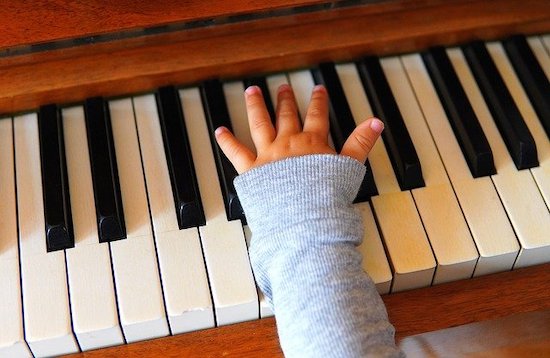
At age three, she got up on a crowded subway car and started singing. At family holidays, she wanted to do concerts for grandma and grandpa. During elementary school years, she drove her siblings crazy because she was always humming to herself. Even while doing her math or writing.
According to Gardner’s theory of multiple intelligences, musical-rhythmic learners (MRL) are natural born musicians. They are good at thinking and feeling in patterns, rhythms and sounds … rather than in, words or images. For some people, it could be a singularly strong giftedness, the primary way they process information. Others may have a mix of abilities. In fact, musical ability sometimes goes along with mathematical/ logical skills.
Though they may annoy their siblings with their humming or whistling, MRL’s tend to be more in tune with nature sounds, and the sounds of their environment than their counterparts. Good or bad, their response to any music they hear is immediate!
These are the people who say, “that sounds about right” and “that’s music to my ears.”
They hear musical notes spontaneously in their head. It could be because something reminded them of a song they heard last week. Or last year.
You don’t have to be a concert pianist or world-class composer to have musical intelligence. It’s about having a profound connection to sound.
How do I teach my MRL?
In traditional classrooms, music is rarely used as a teaching method. Quiet learning is often a must, though many MRL kids find this frustrating.
Musical-rhythmic learners do well in a homeschool setting when allowed to learn at their pace in their preferred style. Plan to use a lot of sounds! If you have several different learners at home, you’ll need to tailor the learning spaces and activities to best match everyone’s needs.
For MRL kids, the use of music and other sounds related to the academic subject is key. Avoid putting them in a totally silent environment. If there is no noise, they will create their own by humming or tapping out songs, and that may distract them from learning!
Musical learners benefit from hearing themselves speak about their ideas before writing them down. At younger ages, they do better with reading out loud. Even background music, something that many people find distracting, helps them comprehend what they are learning more easily.
They remember what they learn by putting it to music, at least in their heads. Similarly, they relate information, and events to certain songs that are appropriate for the situation.
Although we don’t think of traditional academic subjects in musical terms, you can adapt as you go! Make use of musical education videos that teach grammar, science, civics and much else, such as Schoolhouse Rock.
To encourage history learning, your child could write songs, short melodies, or poems about an event. Teach the songs that were sung during the time period being studied, and use videos with appropriate music in the background. A teen might have fun researching, say, the history of popular World War Two resistance songs such as “Bella Ciao.” For science and technology, there are some great music resources. Even non-musical learners enjoy songs from albums like “Here Comes Science” by the group They Might Be Giants. The subject areas span from biology to astronomy to computer assisted design! Or have your older MRL kid do science experiments while listening to quiet music. Lectures in rhythmic tones are also a great way for MRL children to learn. Help your child think of jingles or verses to remember information they have recently learned.
For math, you and your child can create your own songs for remembering the concepts - a musical mind is pretty creative, after all, and some MSL’s also have strong math abilities. Sing the multiplication facts, and divide with music. For elementary aged children, integrate audio-visual materials such as the Schoolhouse Rock’s series “Multiplication Rock.”
Embrace a “noisy” approach to study time and be patient with all the toe-tapping and humming. Remember, too, that the absence of noise may turn into a distraction. If you have several learners and need to keep the house quiet, headphones for music in the background may help your MRL child learn better. Your MSL’s will likely enjoy educational activities beyond home that center around music. Think voice or instrument lessons, musical theater, or dance. Teens may want to attend concerts with their friends, join a local performance group, or learn about video production.
What will my child be?
As a musical learner your child may be more apt to become a musician, disc jockey, composer, music teacher, or singers than an attorney or research scientist. However, since we all tend to have multiple intelligences, a musical gift can overlap with other capabilities and interests. As long as a child has supportive parents, he or she can excel in all of their dreams, whether it is a singer/songwriter or a physicist.
Download MUSIC PROJECT GUIDE
Home Educators Resource Directory (HERD) is owned, managed, and maintained by parents passionate about giving their children the best education. The Directory’s mission is to provide resources, support, and information helpful to the diverse community of educators around the globe. Along with offering a rich store of varied resources, the Directory maintains a catalog of local and global support groups and calendars highlighting local events.
The HERD monthly newsletter keeps educators apprised of current homeschool events and supplies informational articles for both the new and experienced. We invite you to stay informed with your own newsletter subscription, explore our many resources by visiting the Directory http://www.homeeddirectory.com/ and check out all the information to be found on our blog.
Permission to reproduce this article granted only with the entire article, bio and all links included.





